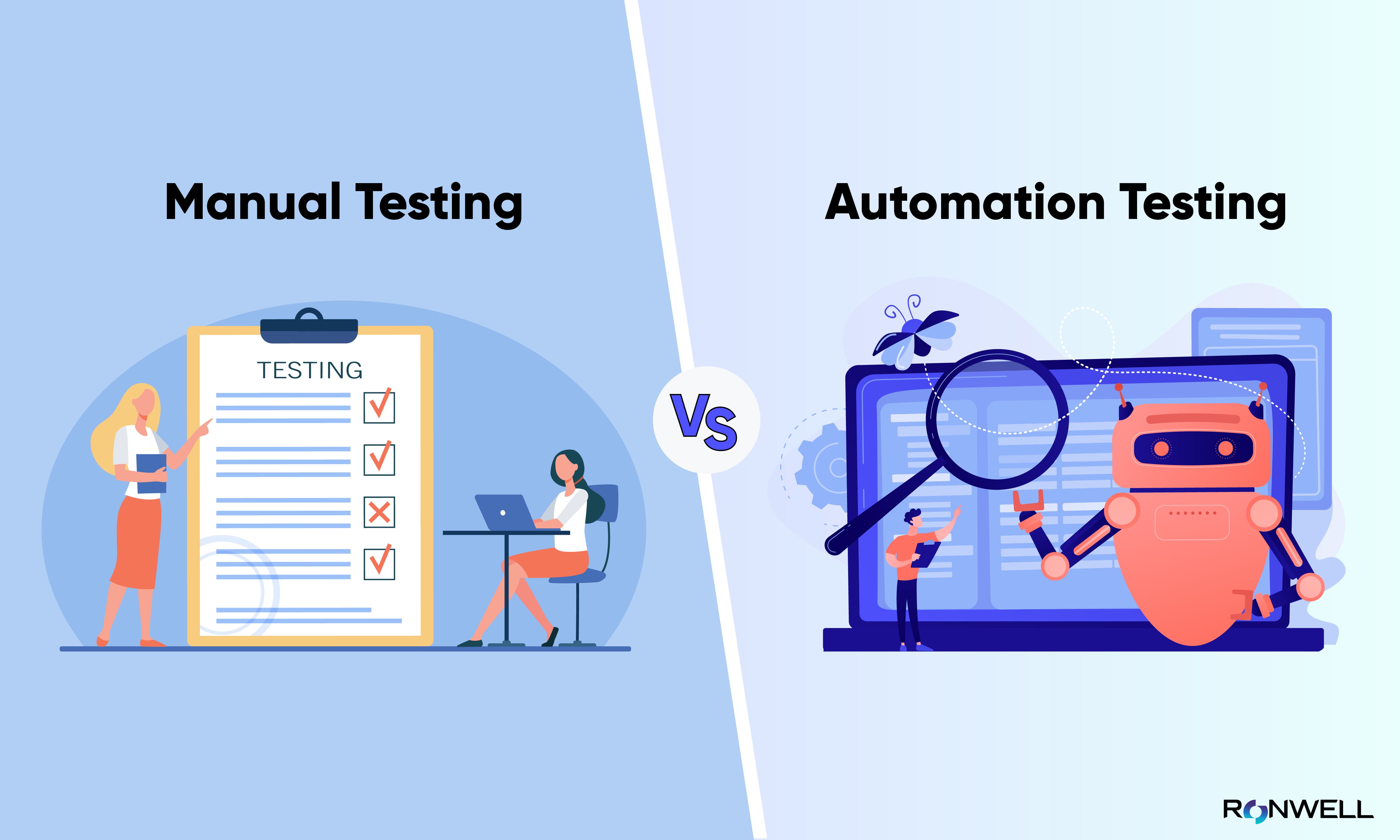Exploring the Future of Automation Testing in Software Application Advancement
Exploring the Future of Automation Testing in Software Application Advancement
Blog Article
From Handbook to Automated Testing: A Comprehensive Guide to Transitioning Smoothly and Effectively
In the world of software program screening, the change from handbook to automated processes has become an increasingly essential change for companies seeking to enhance performance and precision in their screening methods. As innovation remains to advance, the demand for smooth and reliable computerized testing methods has actually never ever been much more important. The trip from manual to automated screening is not without its difficulties, but when come close to tactically and with a clear plan in mind, the advantages can be considerable - automation testing. In this comprehensive overview, we will explore crucial steps and factors to consider necessary for a successful change, from the preliminary selection of devices to the integration of automation right into existing workflows. Keep tuned to discover the understandings that will aid lead the way for a smoother and a lot more effective screening process.
Advantages of Automated Examining
Automated testing supplies many benefits, enhancing performance and accuracy in software application development processes. One key benefit is the substantial reduction in screening time. Automated tests can be run all at once on several tools and operating systems, significantly accelerating the screening phase compared to hand-operated screening. This enhanced performance enables for faster responses on the top quality of the software, enabling programmers to recognize and address issues immediately.
Furthermore, automated testing guarantees a higher level of precision in detecting defects. Since automated examinations adhere to predefined manuscripts, human error is reduced, resulting in more reliable examination outcomes. Uniformity in testing is also improved, as automated examinations carry out the exact same steps precisely each time they are run. This uniformity is vital in making sure that all performances of the software application are thoroughly examined, lowering the probability of unnoticed insects slipping via to manufacturing.
Picking the Right Tools

First of all, evaluate your demands and objectives. Recognize the range of your job, the technologies involved, and the ability collection of your team. This analysis will certainly assist you identify the capacities and attributes you need in your testing devices.
Second of all, consider the compatibility of the devices with your existing processes and systems. Smooth combination with your present software growth lifecycle is vital to make certain a smooth change to automation.
In addition, assess the scalability and flexibility of the devices. As your testing needs advance, the tools should have the ability to adapt and suit modifications efficiently.
Last but not least, consider the support and community around the devices. Durable support and an energetic individual community can give useful resources and support when executing automated testing. By meticulously taking into consideration these facets, you can choose the right tools that straighten with your demands and set the phase for a successful shift to automated screening.
Composing Reliable Examination Scripts

When crafting examination scripts, it is important to think about the specific demands of the software being examined and guarantee that the scripts attend to all critical capabilities. Detailed and clear calling conventions for test scripts and examination cases can improve readability and maintainability. In addition, incorporating error handling systems within the examination scripts can assist in recognizing and addressing problems without delay.
Furthermore, organizing examination manuscripts into modular elements can boost reusability and scalability, decreasing redundancy and improving performance in test manuscript maintenance. Routine testimonials and updates to test manuscripts are essential to equal progressing software application requirements and performances. By following these concepts, testers can produce robust and reliable examination scripts that contribute significantly to the success of automated testing procedures.
Integrating Automation Into Workflows
Reliable assimilation of automation tools into existing workflows boosts and streamlines processes performance within software program advancement cycles. When incorporating automation right into workflows, it is important to recognize recurring jobs that can be automated to save time and reduce human error. By perfectly incorporating automated screening devices like Selenium or Appium into the software program advancement lifecycle, teams can visit this site achieve faster responses on code changes, bring about quicker bug discovery and resolution. This assimilation permits continuous screening throughout the development procedure, ensuring that any type of issues are determined beforehand, leading to greater software high quality. Additionally, automation can be made use of to cause tests instantly after each code devote, supplying prompt recognition and maximizing testers to focus on even more complex scenarios. Correct assimilation of automation tools calls for collaboration in between development, screening, and operations teams to establish a unified operations that enhances efficiency and performance in delivering top quality software program products.
Guaranteeing a Smooth Shift
Efficiently transitioning to automated testing involves precise preparation and mindful implementation to reduce interruptions and make best use of performance in the software program development process - automation testing. To guarantee a smooth shift, it is crucial to begin by performing an extensive analysis of the existing screening procedures and recognizing locations where automation can bring one of the most considerable advantages. Involving with all stakeholders early while doing so, consisting of designers, testers, and job managers, is important for gathering support and buy-in for the automation effort
Interaction is crucial throughout this change stage. Clear communication of the goals, benefits, and expectations of automated testing aids to take care of any kind of resistance or problems that might emerge. In addition, supplying ample training and sources for employee to upskill in automation tools and strategies is crucial for making sure a successful transition.

Conclusion
In conclusion, transitioning from manual to automated testing provides various benefits, including enhanced effectiveness and reliability. By selecting the suitable tools, writing effective examination manuscripts, and integrating automation perfectly into workflows, organizations can ensure a effective and smooth change. It is necessary to accept automation as a useful possession in software testing procedures to boost general quality and productivity.
In the realm of software application testing, the change from handbook to automated processes has come to be a significantly crucial shift for organizations looking for to improve effectiveness and accuracy in their screening methods. Automated tests can be run at the same time on numerous gadgets and More hints operating systems, substantially speeding up the screening phase contrasted to hands-on screening. Uniformity in testing is additionally enhanced, as automated examinations carry out the same actions exactly each time they are run.To ensure the successful execution of chosen screening tools, the creation of reliable test manuscripts plays a vital duty in verifying the capability and performance of automated procedures - automation testing. By complying with these concepts, testers can create durable and effective test manuscripts that contribute dramatically to the success of automated testing procedures
Report this page